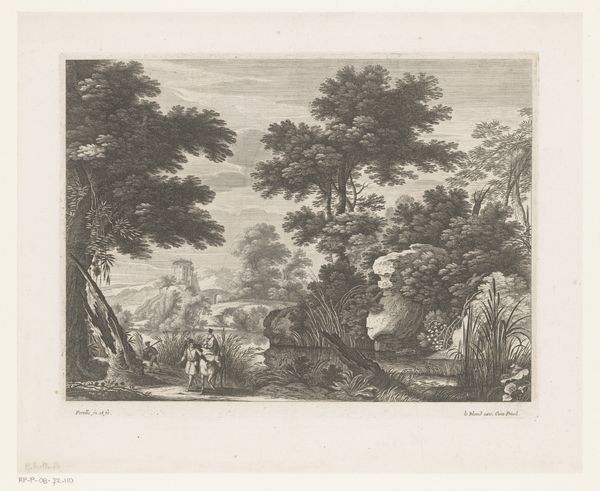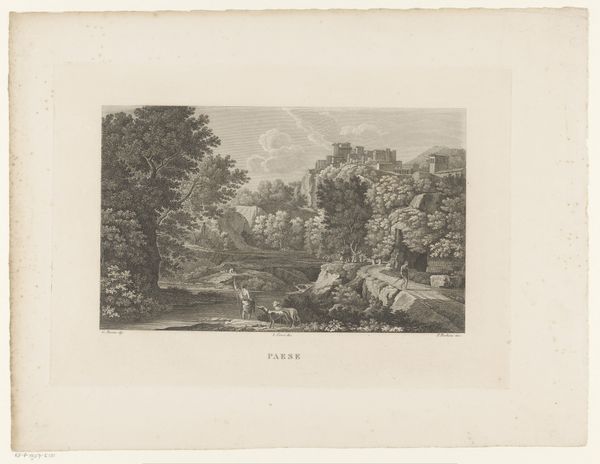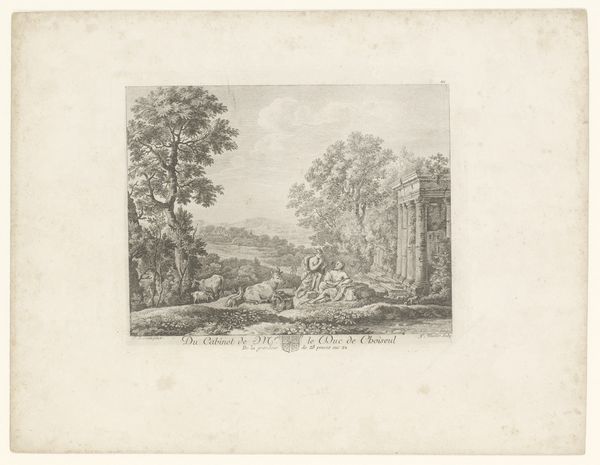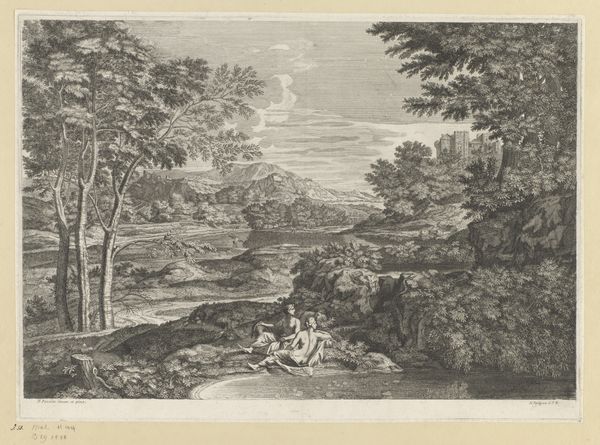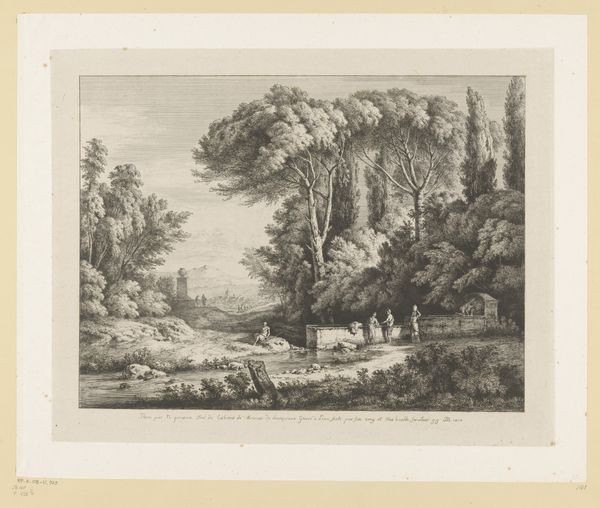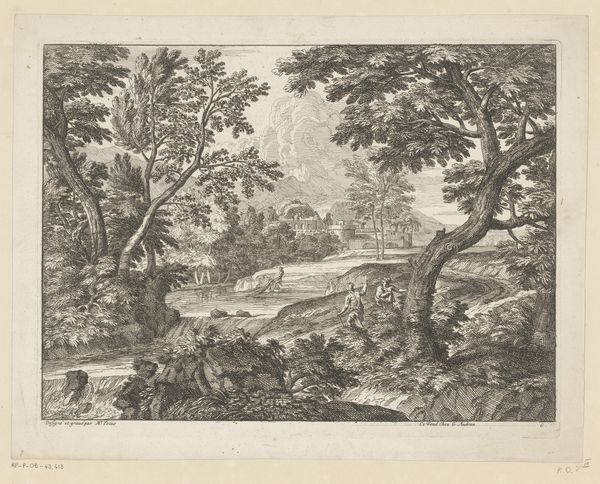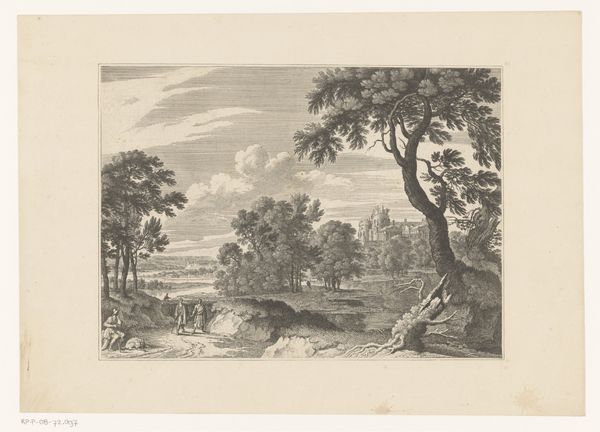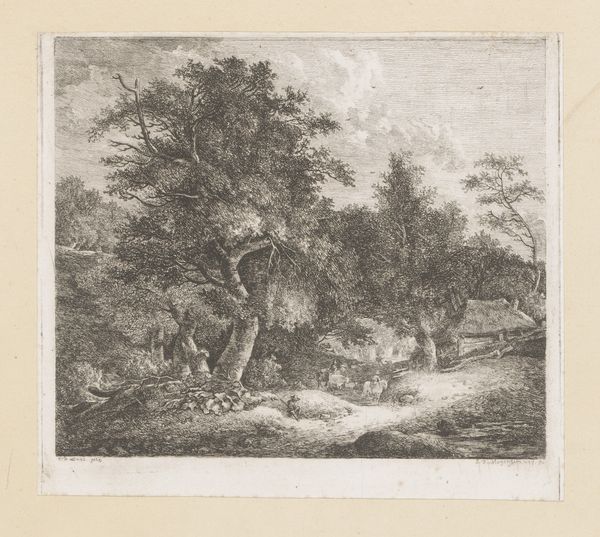
print, engraving
# print
#
landscape
#
romanticism
#
engraving
Dimensions: height 327 mm, width 430 mm
Copyright: Rijks Museum: Open Domain
Carl Wilhelm Kolbe created this landscape with riders by a bridge using etching, a printmaking technique that relies on acid to bite into a metal plate, in this case copper. The fine lines and tonal variations you see are achieved through meticulous work, manipulating the depth and density of the etched lines. Kolbe would have coated the plate with a waxy, acid-resistant ground, then drawn his image into it with a sharp needle. This exposed the copper, allowing the acid to etch lines into the metal. The longer the plate sits in the acid, the deeper the lines become, enabling a wide range of tones when printed. Etching allowed for the relatively easy reproduction and circulation of images. Here, landscape imagery catered to an emerging middle class that yearned for contact with nature and rural life, in contrast to the increasingly industrialized urban centers. The finished print on paper embodies a specific moment in cultural history, reflecting the changing relationship between humans and the natural world, labor, and leisure in the late 18th and early 19th centuries.
Comments
No comments
Be the first to comment and join the conversation on the ultimate creative platform.
